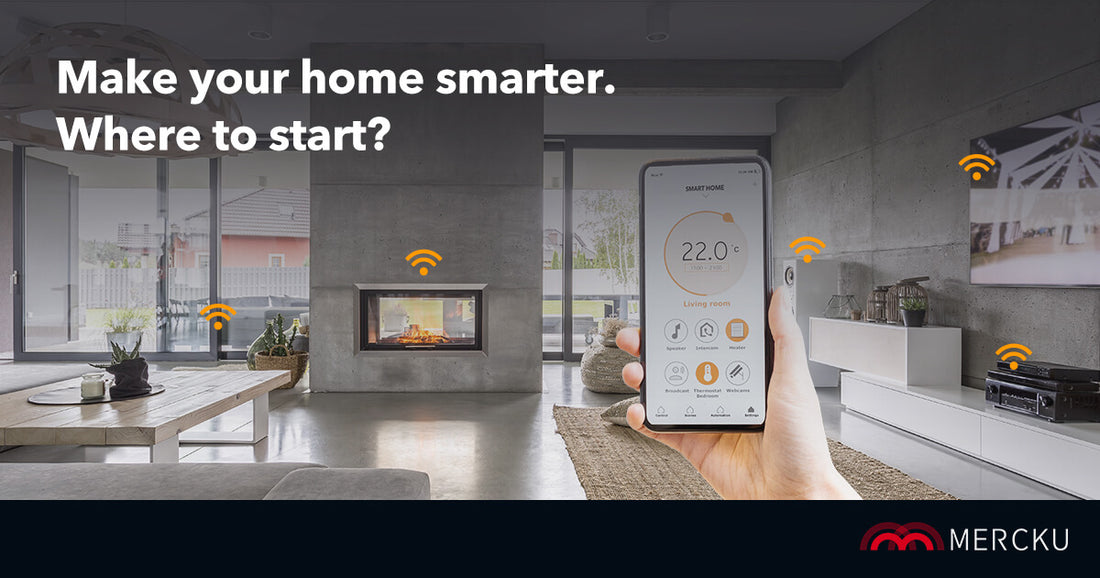
Want to turn your house into a futuristic smart home? Jealous of the McFly’s house in Back to the Future II? Can’t figure out where to start? With the number of smart home products on the market, selecting the right combination of products and features for your home can be confusing. You could hire a company to visit your home and install an integrated solution for you, or you could start installation yourself. Here are the products you should consider including in your smart home set up:
A Virtual Assistant
The three most commonly known virtual assistants are Alexa from Amazon, Google Assistant from Google, and Siri from Apple. The voice-operated assistants allow your devices to be controlled centrally. The convenience of saying "Alexa, next song" to skip through your Spotify playlist while your hands are full in the kitchen simply can't get better.
When deciding which platform to get for your home, it is important to consider which devices you may want to integrate and to determine if they are compatible with the platform. Once you’ve made a decision, you will need to purchase the corresponding hardware. Options include:
- Alexa: Echo, Echo Dot, Echo Show, Echo Plus
- Google Assistant: Mobile phone with Android, Google Home
- Siri: iPhone, iPad, Apple Watch
A Smart Home Hub
Smart home and IoT devices need to be able to send and receive signals over long distances. However, when signals travel they can get distorted. If we were simply to strengthen the signals, they would interfere with the Wi-Fi signals in our home. So, mesh networks like Zigbee and Z-Wave were created to strengthen communications between smart home devices.
A smart home hub acts as a translator. No matter what protocol a device uses to communicate, the hub will translate it to allow the device to communicate with the rest of your smart home ecosystem. The hub also allows you to control all your devices from one location. This is an excellent addition if you're looking to install many devices that may not be able to communicate with each other.
Smart Lights
Some smart lights have Wi-Fi capabilities built-in and can connect directly to your router to send and receive wireless transmissions. Others can wirelessly connect to a smart home hub or use Bluetooth to interact with other devices.
A Smart Thermostat
By connecting your smart thermostat to your Wi-Fi, controlling the temperature in your home can be done via a virtual assistant or from your smartphone. Smart thermostats also adjust to your living patterns and will reduce heating/cooling when you leave the home to optimize for energy efficiency.
A Mesh Wi-Fi System
Your smart home is only as strong as your Wi-Fi. So, it is important to have reliable, high-speed internet to ensure your devices are functioning at their maximum capacity.
Mesh Wi-Fi systems include the main router and a set of nodes that may be installed throughout a larger space. The router and nodes work together to create one seamless and unified network signal that extends the coverage area and increases the strength of your internet connection.
In a leading solution, such as Mercku's M2 Hive Mesh Wi-Fi system, nodes connect automatically to create a mesh network. The network can be scaled throughout larger spaces and across multiple floors to ensure that there are no dead spots in your home. Unlike other solutions, Mercku’s Mesh Systems intelligently connect your devices to the unit which provides the best signal at every given moment.
Plug-In Appliances
There are appliances such as coffee makers, electric kettles, or washing machines that are enabled with smart home features. They simplify life by allowing you to activate them via your virtual assistance or smartphone from wherever you happen to be.
These devices are basic additions that will allow you to build a sophisticated smart home.
With these tips and recommendations, you'll be well on your way to your dream smart home. The rest is up to you!

